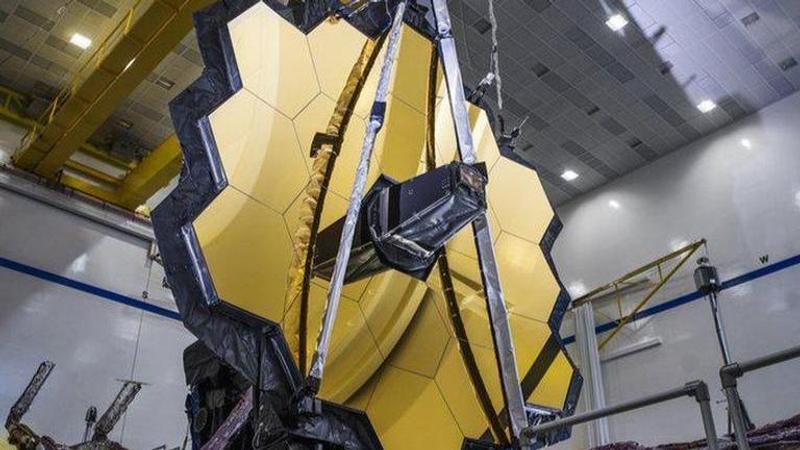Published 21:44 IST, November 25th 2021
ESA explains how the Webb telescope will peer back over 13.5 billion years
The European Space Agency has tried to explain how humanity will be able to look back 13.5 billion years ago when our universe emerged out of a big bang.

Advertisement
The James Webb Space Telescope, which is recovering from a near-endangering incident will be launched next month and scientists are confident that it will make unforeseen discoveries. Currently undergoing final tests at the preparation facility in French Guiana’s Kourou, the telescope will lift off on December 22 in an Ariane 5 rocket. Ahead of its launch, one of its developers, the European Space Agency (ESA) has tried to explain how humanity will be able to look back 13.5 billion years ago, the time when our universe emerged from a big bang.
#Webb’s infrared vision makes it a powerful time machine that will peer back over 13.5 billion years – right back to our cosmic origins – to reveal things no telescope has seen before: https://t.co/qWLbAvikZ9 #WebbSeesFarther pic.twitter.com/iXnol14IID
— ESA Webb Telescope (@ESA_Webb) November 25, 2021
A telescope with sensitivity 100 times that of Hubble
The James Webb Space Telescope, as we know it, is the most powerful and most complex observatory ever built. The telescope, which is as big as a tennis court, is equipped with 18 individual mirrors, that combine to form a large mirror that measures 6.5 metres across. According to the ESA, the Webb telescope is 100 times more sensitive than the Hubble space telescope and it will build on the work previously done by the Hubble and Herschel telescope to answer questions about the early universe.
ESA states that Webb is designed to answer fundamental questions about the universe as it will offer us a peek into how the universe once was 13.5 billion years ago. The most fascinating feature, which makes the observatory special, is its ability to detect even the faintest of infrared light generated by galaxies millions of light-years away. “When we observe something that is a million light-years away, what we are seeing is actually how it looked a million years ago, we are looking back in time,” ESA said in its report.
Webb’s ability to detect faint infrared travelling through the universe will be helpful as when light emerges from galaxies billions of light-years away, its wavelength gets stretched over time and turns infrared. Once these wavelengths are detected, scientists will be able to determine what a galaxy and the stars in it looked like in their younger days. “Webb’s data will also answer the compelling questions of how black holes formed and grew early on, and what influence they had on the formation and evolution of the early Universe,” ESA stated.
Image: Twitter/@ESA
Updated 21:44 IST, November 25th 2021



